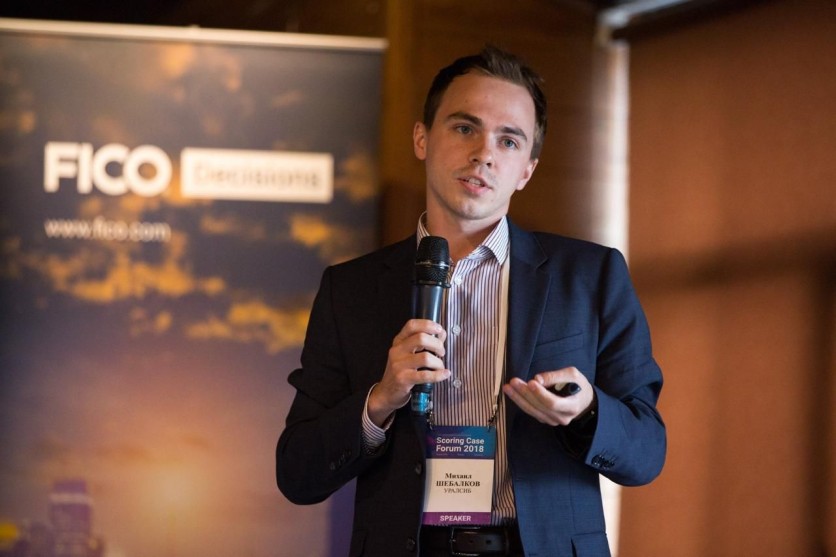
Mikhail Shebalkov's career has taken him from risk analyst to international fintech director. Today, he leads analytics at Wallet in Telegram—a cryptocurrency wallet built directly into one of the world's largest messaging platforms. In this conversation with TechTimes, he shares how he implemented real-time AI marketing and why he believes the future of cryptocurrency rests not on hype, but on data.
— Mikhail, your career is impressive: from banking risk management to senior leadership roles in fintech. How has your international experience shaped your approach to analytics in financial technology?
— My first real "import" of professional knowledge came right at the start—studying finance and investments in the UK gave me a solid grounding in how global markets work. Add to this a foundation in mathematics and the early years at Alfa-Bank and Uralsib Bank—and you get a solid framework onto which fintech skills were later built. Working at Yandex Fintech on "Yandex Account" and "Yango Pay" became a great school of flexibility: the market was changing fast, and we had to design products that could scale while staying intuitive for millions of users. At the same time, participation in the Russian Business Leaders program in the US and launching the startup floori.io, which became one of the leaders in the e-commerce segment of augmented reality, taught me to adapt technologies to local habits and needs. I now see this balance between global vision and local execution as the key to success.
— You worked on fintech products at Yandex. What analytical data and approaches did you use for its development, and how can this be applied in the context of Wallet in Telegram?
— At Yandex, our rhythm was "data → decisions → back to data." We observed user behavior, spotted patterns, built relevant financial services around them, and immediately tested what worked best. Personalization and risk management were at the core. Thanks to them, we were able to make products accessible not only in Russia but also in African markets.
The same approach works at Wallet: we analyze real-world usage patterns, identify audience needs, launch in-demand features, and fine-tune compliance processes—so that speed and convenience never come at the expense of security.
— Mikhail, after our discussion of Yandex Fintech, I'm particularly curious about the 'inner workings' of the large-scale projects you led there. Could you share more?
— At Yandex, we aimed to create financial services that were blended seamlessly into people's daily lives. It wasn't a separate bank, but rather a "financial layer" running through the entire Yandex ecosystem—from taxis and food delivery to marketplaces and subscriptions. Our first major product was Yandex Account, an internal payment hub that made it easy to pay for services, earn cashback, and receive personalized offers.
We focused heavily on user experience: topping up an account in just two clicks, automated payments, instant transfers, and many more. But above all, it was the data that drove us. Through deep analysis, we created products that met user needs at exactly the right time and place. For me, this was a unique experience: we weren't just building another fintech service—we were rethinking what a digital bank could be within a technology platform.

— You have accumulated a lot of experience in classical fintech across different markets, and then transitioned to Web3, becoming part of Wallet in Telegram. For many, that's quite a pivot. What attracted you to this direction?
— From the outside, it might look like a sharp change, but for me it was the natural next step. I've always worked at the intersection of data, analytics, and fintech—and that path led me directly to Wallet. Web3 is now moving out of the phase of enthusiastic developers and transitioning to scaling, where the experience accumulated in classical fintech is critically important: handling big data, applying behavioral analytics, and using machine learning. At Wallet, I see the opportunity to apply that knowledge to create Web3 services that are fast, simple, and truly user-centric.
— What is Wallet in Telegram, and why is it becoming popular?
— Wallet is a cryptocurrency wallet built into the Telegram messenger. It lets users send, receive, store, and, in some cases, invest in crypto—all within an app they already use every day. Its popularity lies in convenience, simplicity, and the fact that it is integrated into an ecosystem with hundreds of millions of users.
— What are the benefits of Wallet for users?
— Wallet in Telegram offers a range of benefits: ease of use without the need to install extra apps, competitive USDT exchange rates that help users reduce currency-fluctuation risks, and instant crypto transfers to Telegram contacts—making it as useful for everyday payments as for cross-border transactions.
The platform also opens the door to investment tools like staking, enabling users to earn passive income from holding crypto. That said, it's important to remember that crypto investments carry high risks: prices can change sharply, leading to losses. Always research carefully, assess the risks, and seek professional advice before investing.
— Finally, I'd like to touch on your involvement in educational and professional initiatives—from judging at the RAIF 2017 AI business forum to teaching analytics and serving on state examination boards. Let's start with RAIF: what was it like to be in the judge's chair?
— RAIF 2017 hosted the RAIF-Challenge, a competition for developing business ideas using AI and machine learning. For me, it was important not only to see the technical implementation but also to understand to what extent the team realizes the business problem and the impact of the solution on real processes.
For example, in the task from Uralsib Bank on predicting customer churn, I highly valued not only the accuracy of the forecast but also how quickly the solution could be integrated into existing systems. Innovation mattered too: sometimes a solution wasn't perfect, but if it came with a bold, fresh idea, it could be more valuable than a polished yet conventional approach. I remember teams that, lacking experience in the banking sector, proposed unexpected methods of data analysis—so interesting that some of them we later discussed for implementation.
— But this is not the only time you had to evaluate the work of young specialists. In 2022, you were a member of the state examination board. How was this experience valuable for you?
— It was a Master's program in big data analysis and machine learning in economics and finance at the Finance University. For me, it became a sort of recognition of my professional path. I looked not only at whether students know the formulas and methods, but also at whether they can apply them in real cases—whether it's forecasting market trends or analyzing financial risks.
I especially valued their ability to work with data: choosing the right methods, assessing model quality, interpreting results. I see exams not as a formal check, but as a professional dialogue. Whether in an exam or a job interview for my team, I aim to ask questions that let people show not just what they know, but how they think, reason, and solve problems.
ⓒ 2025 TECHTIMES.com All rights reserved. Do not reproduce without permission.




